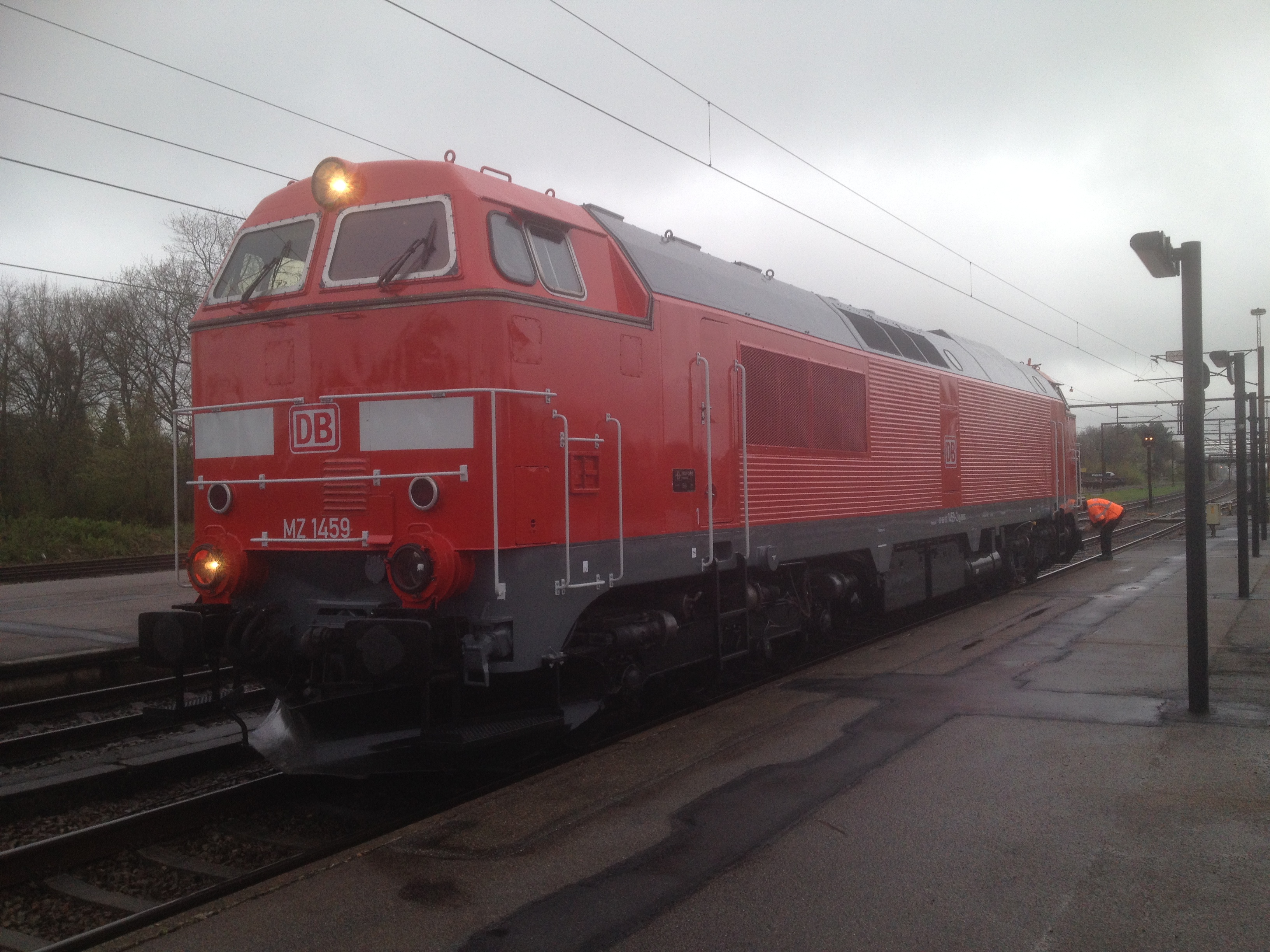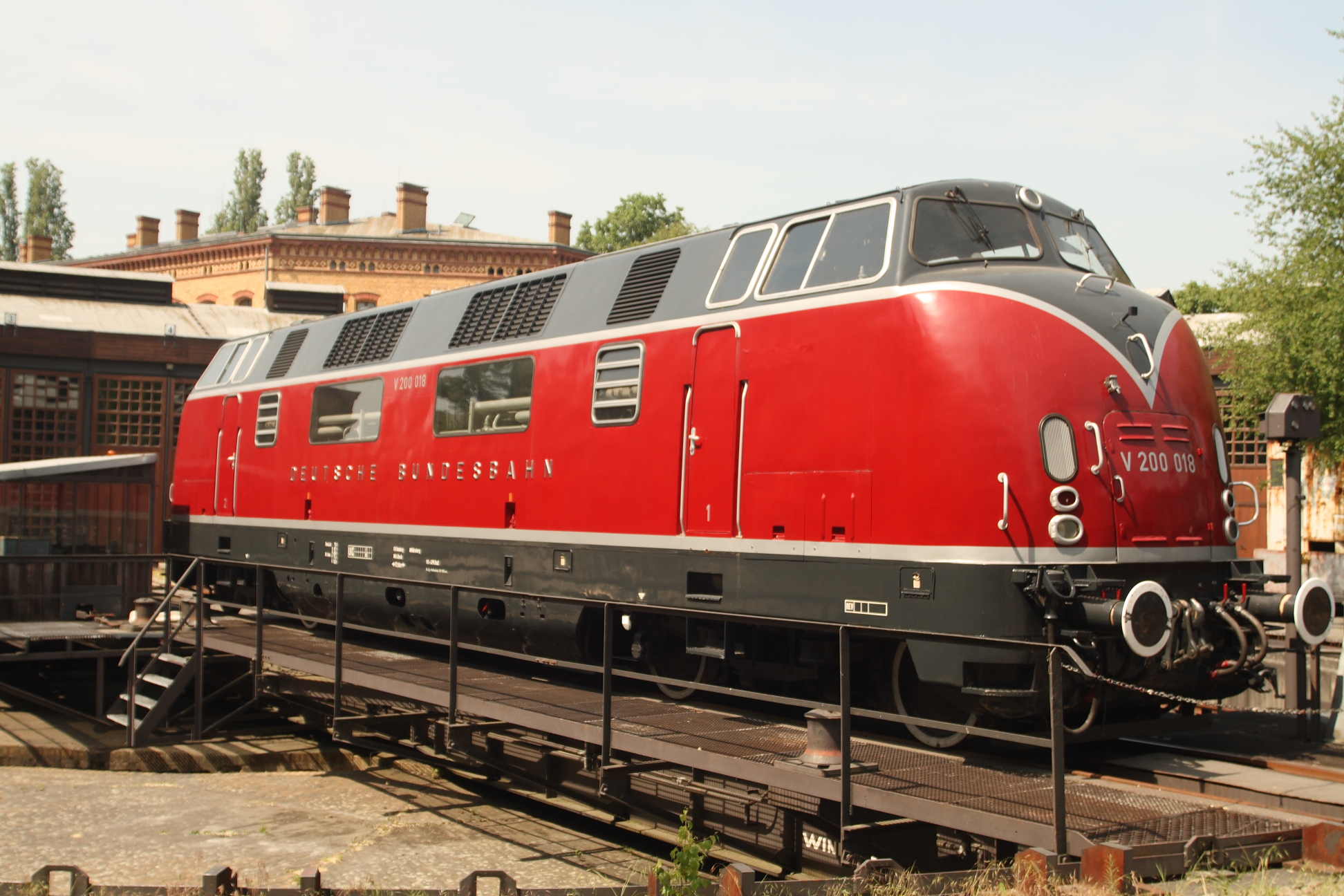|
Renfe Class 333
The Renfe Series 333 are high power six-axle diesel-electric locomotives built in the 1970s; at the time of their introduction they were the most powerful non-electric locomotives in Spain. After three decades of service the class were rebuilt incorporating Alstom's newer technology, and thus extending their life - these rebuilt machines were given the sub-class names 333.3 and 333.4 Background In the early 1970s, Renfe's dieselization program, with classes 316 (former 1600) and 318 (former 1800) CC locomotives, later followed by the more numerous classes 319 (former 1900) and 321 (former 2100), had displaced steam-powered traction and were responsible for much of the work requiring medium-powered locomotives. On the other hand, diesel-hydraulic class 340 (former 4000), based on the German V 200, initially intended for hauling express trains at the Madrid-Barcelona railway and other non-electrified lines, were suffering many failures from poor maintenance and being assig ... [...More Info...] [...Related Items...] OR: [Wikipedia] [Google] [Baidu] |
Diesel-electric Locomotive
A diesel locomotive is a type of railway locomotive in which the prime mover (locomotive), prime mover is a diesel engine. Several types of diesel locomotives have been developed, differing mainly in the means by which mechanical power is conveyed to the driving wheels. Early internal combustion engine, internal combustion locomotives and railcars used kerosene and gasoline as their fuel. Rudolf Diesel patented his first compression-ignition engine in 1898, and steady improvements to the design of diesel engines reduced their physical size and improved their power-to-weight ratios to a point where one could be mounted in a locomotive. Internal combustion engines only operate efficiently within a limited power band, and while low power gasoline engines could be coupled to mechanical transmission (mechanics), transmissions, the more powerful diesel engines required the development of new forms of transmission. This is because clutches would need to be very large at these power le ... [...More Info...] [...Related Items...] OR: [Wikipedia] [Google] [Baidu] |
Head End Power
In rail transport, head-end power (HEP), also known as electric train supply (ETS), is the electrical power distribution system on a passenger train. The power source, usually a locomotive (or a generator car) at the front or 'head' of a train, provides the electricity used for heating, lighting, electrical and other 'hotel' needs. The maritime equivalent is hotel electric power. A successful attempt by the London, Brighton and South Coast Railway in October 1881 to light the passenger cars on the London to Brighton route heralded the beginning of using electricity to light trains in the world. History Oil lamps were introduced in 1842 to light trains. Economics drove the Lancashire and Yorkshire Railway to replace oil with coal gas lighting in 1870, but a gas cylinder explosion on the train led them to abandon the experiment. Oil-gas lighting was introduced in late 1870. Electrical lighting was introduced in October 1881 by using twelve Swan carbon filament incandescent lamps c ... [...More Info...] [...Related Items...] OR: [Wikipedia] [Google] [Baidu] |
DSB (railway Company)
DSB, an abbreviation of ''Danske Statsbaner'' (, ''Danish State Railways''), is the largest Danish train operating company, and the largest in Scandinavia. While DSB is responsible for passenger train operation on most of the Danish railways, goods transport and railway maintenance are outside its scope. DSB runs a commuter rail system, called the S-train, in the area around the Danish capital, Copenhagen, that connects the different areas and suburbs in the greater metropolitan area. Between 2010 and 2017, DSB operated trains in Sweden. DSB was founded in 1885 when the state-owned companies ''De jysk-fynske Statsbaner'' and ''De sjællandske Statsbaner'' merged. History The first railways in Denmark were built and operated by private companies. The railways in Funen and Jutland were built by Peto and Betts who also supplied the locomotives (built by Canada Works, Birkenhead). Most of the technical staff was also recruited from Britain, notably from the Eastern Counties Railway. ... [...More Info...] [...Related Items...] OR: [Wikipedia] [Google] [Baidu] |
DSB Class MZ
DSB class MZ was a series of 61 diesel-electric locomotives operated by Danske Statsbaner. They were built by NOHAB between 1967 and 1978 under licence from General Motors EMD with subcontractors Thrige-Titan (traction motors) and Frichs (chassis, bodywork). There were four series of the locomotive built, designated I - IV. Twenty were sold to Railion Denmark in 2001, two were sold to Spain's COMSA Rail Transport in 2004, and 16 of the III series were exported to Australia in the late 2000s. As of 2010 most of the remainder of the class are divided between various Danish, Swedish and Norwegian companies. In Sweden the locomotives have received the designation TMZ. Sub-series MZ I Ten units of the first series were built between 1967 and 1969, each costing DKK ~2.4 million.DSB MZ(I) 1401-1410, ''www.jernbanen.dk'' One is kept by the Danish Railway Museum (MZ 1401), while the rest were sold to various Swedish operators between 2002 and 2006 including three to Motala Verkst ... [...More Info...] [...Related Items...] OR: [Wikipedia] [Google] [Baidu] |
Express Trains
An express train is a type of passenger train that makes a small number of stops between its origin and destination stations, usually major destinations, allowing faster service than local trains that stop at most or all of the stations along their route. They are sometimes referred to as "fast trains" (or an equivalent term, such as the German '' Schnellzug''), meaning that they are faster than other trains on the same route. Though many high-speed rail services are express, not all express trains are "fast" relative to other services; early trains in the 19th-century United Kingdom were categorized as express trains as long as they had a "journey speed" of at least . Express trains sometimes have higher fares than other routes, and bearers of a rail pass may be required to pay an extra fee. First class may be the only one available. Some express train routes that overlap with local train service may stop at stations near the tail ends of the line. This can be done, for exa ... [...More Info...] [...Related Items...] OR: [Wikipedia] [Google] [Baidu] |
DB Class V 200
DB Class V 200 (also known as Class 220) was the first series production diesel-hydraulic express locomotive of the German Deutsche Bundesbahn and – as Am 4/4 – of the SBB-CFF-FFS in Switzerland. History DB Service Five prototypes of the V 200 were built by Krauss-Maffei in 1953/1954. Full production began in 1956, with 61 engines being built by Krauss-Maffei and 20 by MaK. These five V 200 prototypes were put through extensive testing, the aim being to ensure the production locomotives would be as reliable as the technology and maintenance standards of the 1950s allowed. In 1955 one locomotive travelled under its own power through Yugoslavia, Greece and Turkey partly as a test and partly to demonstrate the locomotive's capability to potential customers in those countries. Initially the V 200 hauled express trains on all main lines, replacing the DRG Class 05, DRG Class 03 and DRG Class 01. Following the electrification of many main lines the V 200 was used increasi ... [...More Info...] [...Related Items...] OR: [Wikipedia] [Google] [Baidu] |
Renfe Class 340
The Class 340 of Renfe (4000 under the previous numbering scheme) were a class of 4-axle diesel-hydraulic locomotives built by Krauss-Maffei (and Babcock & Wilcox) for the Spanish Railways. The design is similar in outward appearance and technology to the DB Class V 200. 32 units were built. Background and History The locomotives had a total power of from 2 motors (each a 16-cylinder Maybach/Mercedes Benz MD870) diesel engine. Hydraulic transmissions used were two Mekydro K184. The contract consisted of a series of 32 units which were shipped between 1966 and 1969, ten manufactured in Germany by Krauss-Maffei and the remaining twenty-two manufactured Spain by Babcock & Wilcox. The locomotives were similar to the V 200.1 Series of the Deutsche Bundesbahn, but with more power, more weight and slightly longer. The units were conceived as locomotives for passenger services, with a maximum speed of , but then were also used for freight trains which together with inadequate maintena ... [...More Info...] [...Related Items...] OR: [Wikipedia] [Google] [Baidu] |
Diesel Locomotive
A diesel locomotive is a type of railway locomotive in which the prime mover is a diesel engine. Several types of diesel locomotives have been developed, differing mainly in the means by which mechanical power is conveyed to the driving wheels. Early internal combustion locomotives and railcars used kerosene and gasoline as their fuel. Rudolf Diesel patented his first compression-ignition engine in 1898, and steady improvements to the design of diesel engines reduced their physical size and improved their power-to-weight ratios to a point where one could be mounted in a locomotive. Internal combustion engines only operate efficiently within a limited power band, and while low power gasoline engines could be coupled to mechanical transmissions, the more powerful diesel engines required the development of new forms of transmission. This is because clutches would need to be very large at these power levels and would not fit in a standard -wide locomotive frame, or wear too quic ... [...More Info...] [...Related Items...] OR: [Wikipedia] [Google] [Baidu] |
Renfe Class 321
The Renfe Class 321 (formerly 2100 series) is a class of diesel-electric locomotives operated by Renfe in Spain, designed by Alco and built by them and by Euskalduna under licence. Technical specifications The locomotives have a Co-Co wheel arrangement, and are equipped with GEC 5G-761 engines. History Production started in 1965. A total of 80 locomotives were built until 1971, with the first eight built by Alco, and the remaining 72 by Euskalduna. Four locomotives were rebuilt for freight service trials. Regular services with Renfe have ended, and some locomotives are used by Adif to haul maintenance trains. File:321051SA11052013.jpeg, Adif 321 051 in May 2013 File:Tren de Felipe II - 2017-08-13 - Daniel Luis Gómez Adenis.jpg, Alsa 321, numbered as 2148, in August 2017 References Further reading * {{diesel-loco-stub 321 Year 321 ( CCCXXI) was a common year starting on Sunday (link will display the full calendar) of the Julian calendar. In the Roman Emp ... [...More Info...] [...Related Items...] OR: [Wikipedia] [Google] [Baidu] |





